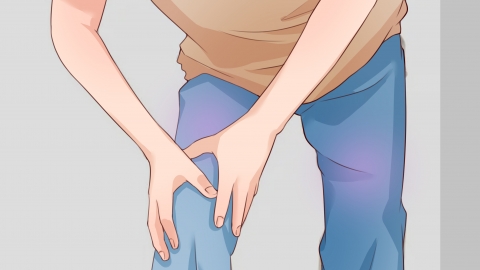What causes numbness from the foot up to the thigh?
Generally, numbness from the foot to the thigh may be caused by prolonged maintenance of the same posture, improper sleeping posture, cold stimulation, lumbar disc herniation, multiple sclerosis, and other similar reasons. Symptomatic management through general treatment, physical therapy, and medication may be necessary. If symptoms are severe, timely medical consultation is recommended, following the doctor's instructions for treatment. A detailed explanation is as follows:

1. Prolonged Maintenance of the Same Posture
Maintaining the same posture for a long time, such as sitting, standing, or squatting for extended periods, can compress nerves and blood vessels, causing numbness from the foot to the thigh. Accompanying symptoms may include weakness and soreness in the lower limbs. It is recommended to adjust posture regularly, avoid prolonged static positions, and perform appropriate massage and heat application to promote blood circulation.
2. Improper Sleeping Posture
Long-term improper sleeping posture can also lead to poor circulation in the lower limbs, causing numbness from the foot to the thigh. Accompanying symptoms may include weakness and aching in the lower limbs. It is recommended to improve sleeping posture and ensure a comfortable bed to alleviate symptoms.
3. Cold Stimulation
In cold environments, the body prioritizes blood supply to vital organs by constricting peripheral blood vessels to reduce heat loss. This can reduce circulation to the extremities, leading to insufficient oxygen and nutrients to nerve endings, resulting in numbness. It is recommended to wear warm clothing and socks and avoid prolonged exposure to cold environments.
4. Lumbar Disc Herniation
Lumbar disc herniation is mainly caused by long-term strain, trauma, and other factors. When a lumbar disc herniates, the protruding disc tissue may compress adjacent nerve roots, especially the sciatic nerve, affecting their normal function and causing numbness, tingling, or weakness in the lower limbs. It is recommended to follow medical advice for non-surgical treatments such as physical therapy and massage to relieve nerve compression and inflammation.
5. Multiple Sclerosis
Multiple sclerosis is an autoimmune disease primarily caused by a combination of autoimmune reactions, viral infections, and other factors. The immune system mistakenly attacks the myelin sheath of the central nervous system, impairing nerve signal transmission. As the disease progresses, patients may experience symptoms such as limb numbness and coordination disorders. It is recommended to use medications such as recombinant human interferon beta-1b for injection, glatiramer acetate injection, and dimethyl fumarate enteric-coated capsules under a doctor's guidance for treatment.
It is also recommended to engage in moderate aerobic exercise in daily life, such as walking, jogging, and swimming, to strengthen leg muscles and improve blood circulation.




